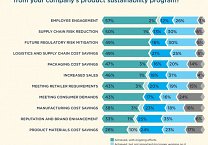Radio Flyer, BeautyCounter Demonstrate Leadership in Sustainable Chemicals Management
by Tara Gallagher
13 June 2016
Radio Flyer and Beautycounter stand among leading companies taking proactive steps to manage chemicals in their products and supply chains. These and just over twenty other firms benchmarked their programs and performance in the newly launched Chemical Footprint Project.
The survey evaluates approaches that comprise an effective program, including management strategies such as restricted substances lists, chemical inventory, footprint measurement and verification and disclosure. In addition to these approaches, companies taking meaningful action hold a few fundamental characteristics well within reach of most companies.
1. Leadership Support with Clear Objectives
Chief Wagon Officer at Radio Flyer Robert Pasin states, "As a creator of playthings for children, Radio Flyer takes a strong precautionary approach to the materials in our products.” As a result, the company has placed chemical safety at the heart of its product development work. This clear direction helps the company move to avoid chemicals of concern from concept to commercialization.
“Beautycounter’s mission is to ‘get safer products into the hands of everyone,’ and we have followed a stringent ingredient selection process from day one,” notes Mia Davis, Beautycounter’s Head of Environment, Health & Safety. The results from the first Chemical Footprint report verify that clear support from the top helps firms perform better in chemicals management.
2. Capacity to Take Action
Pure Strategies’ Managing Director Tim Greiner, Co-founder of the Chemical Footprint Project, notes that, “Having a strong understanding, or inventory, of chemicals and hazards in products and the supply chain is fundamental to an effective chemicals management program and can bring significant business benefits. Surprisingly, few companies have a clear handle on this because of lack of information or the data complexity.”
The Chemical Footprint Project survey pointed to important capabilities needed for effective chemicals management building from chemicals and hazard knowledge and including supplier engagement and robust methods to evaluate materials and identify safer alternatives. To assist companies in managing the array of chemicals used in their products and supply chain, there are a number of software options available, summarized in: Sustainable Chemicals Management Software: A Pure Strategies Review of Tools for Managing Chemicals in Products.
3. Commitment to Continuous Improvement
Firms that take a continuous improvement approach have advanced more than others. Pure Strategies’ Greiner echoes the Chemical Footprint Project’s findings by noting, “Companies that participate in the survey gain comparative data on performance and receive a clear set of identified improvement options. This helps them better manage their chemical risks and achieve the greater business benefits that come with strong chemicals management.”
Beautycounter holds “Learn Constantly” as a pillar in their chemicals program. Mia Davis from Beautycounter notes, “Participating in the Chemical Footprint Project allows us to communicate our management approach in a standardized and comparable way, while pointing us to areas where we can improve.”
Radio Flyer’s Pasin agrees, noting that, "Benchmarking our chemicals management strategy against the Chemical Footprint Project’s best practices, along with the guidance we receive from our partner Pure Strategies, are invaluable in helping us continue to enhance our approach." Over twenty firms participated in the first Chemical Footprint Project survey. Additional participants, Johnson & Johnson and Kaiser Permanente, discussed their learnings from the survey on a panel organized by Greiner at Sustainable Brands ’16 San Diego on June 7th.
Establishing a strategy, measuring results, and engaging externally are the pillars of a sustainable chemicals management program. “We are impressed by the firms we work with, including Radio Flyer and Beautycounter, that are taking important steps to implement this approach,” notes Greiner. Further, companies engaging in the Chemical Footprint Project demonstrated that a few key strategies are critical in supporting an effective program. This brings the potential to gain through cost savings, risk reduction, and growth opportunities within reach of most companies and bodes well for improved product safety in the marketplace.
Written by Tara Gallagher
Tara Gallagher, a Senior Advisor at Pure Strategies, specializes in developing and communicating sustainability strategies. An expert in CSR reporting, she wrote the award-winning 2007 and 2008 Seventh Generation Corporate Responsibility Reports as well as the company's 2009 - 2014 reports. Tara has also developed CSR reports and/or other CSR communications for The North Face, EMD Millipore, and numerous other companies. A recipient of the GRI-G4-certified training on the GRI sustainability reporting process, Tara has facilitated materiality assessments for several clients.












